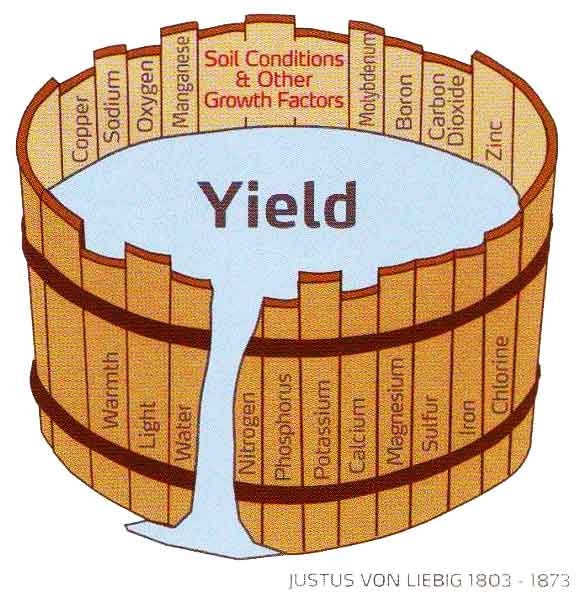If everything ‘went right’ orchardists would produce high yields of fruit with the best marketable features and receive maximum return from their business every year. Many of the factors that place limits on yield being realized are outside of our control.
In fact, most of them come from the environment, especially weather conditions.
We cannot control rainfall, disease pressure and temperature, despite the huge impact these may have. Because we cannot control everything, we need to take care of the things within our control.
When it comes to Stoller, the focus is mainly on nutrients and what can be done to keep the plant in balance.
Genetic potential
A tree has a certain genetic potential to perform, and every day from budburst onwards, things happen to prevent the full potential being realized.
Observe what is happening in the orchard
Leaves are often a good indicator of nutrient deficiencies.
Younger leaves can show zinc, manganese and iron deficiency. Old leaves can show symptoms of potassium and magnesium deficiency.
Each deficiency has its own pattern of leaf size, shape and discolouration. Learning to observe these symptoms early can reduce lost performance.
There are many books that show what these symptoms look like, and experienced advisors can also help.
Stoller and other extension services publish a range of nutrient deficiency guides.
Soil and tissue testing
Soil and tissue testing are useful tools that can help farmers identify issues in their orchard that can be remedied through application of the right nutrients and fertilizers.
Physiological cycles
The Stoller Group has taken crop health one step further by identifying physiological cycles in plants, and understanding which hormones are up-regulated at different growth stages such as vegetative stage, reproductive stage, maturity and ripening.
Each stage requires a different management approach, different nutrient inputs and different monitoring.
Look for things under the surface
Stoller has a philosophy that the roots are the ‘brains of the plant’.
They control nutrient uptake, signalling, and hormone balancing. Dysfunctional roots will lead to poor crop performance.
Remember to dig into the root zone and look for freshly growing, new white root hairs. This is the signal of a healthy tree.
Stoller’s worldwide Technical Director (Albert Liptay) explains that roots behave like the control centre for the tree.
Next season
As the season advances we are also influencing what will happen next year.
The buds for next year are forming now and the nutrients that will be required for spring growth need to be available for storage.
Nutritional balance
Elements, for example zinc and nitrogen, are required early.
Inadequate nitrogen will lead to poor vegetative growth and yellow leaves. Too little nitrogen is a problem, but so is too much. A balance is needed.
Zinc is needed early and the most obvious symptom of low zinc is small leaves. Without zinc the leaves will stay small.
All the other elements are just as important, it only takes one limiting factor to hold back tree performance.
Stoller agronomists will be happy to assist in reviewing tree health and performance, getting the right supply and balance of nutrients at the right time, and ensuring that limiting nutritional factors are minimized. They will also look at strategies to improve root health.
Action
We can not control the weather; in fact many of the biggest influences on tree performance are outside our control. Let’s take responsibility for what we can control.
- Observe the trees—leaves and roots
- Measure nutrient levels in soil and leaf tissue
- Follow input programs that are tailored to the different crop stages
- Take steps to set-up the tree for next season.
Capturing genetic potential
Stoller Australia is a research based company that has a sound understanding of plant nutrition and requirements for healthy crop growth.
Stoller has been investigating the role of nutrients and various nutrient co-factors in taking crops to the next level, by capturing more of the plant’s genetic potential. Areas of interest include:
- Reducing biennial bearing
- Improving pollination in fluctuating temperatures
- Building more root mass to help plants through stress
- Designing stress recovery treatments including the proven frost recovery program
- Lessening the impact of salty soils
- Accelerating and delaying ripening to adjust for climate and market requirements.
For more information, see Tree Fruit November 2013






















